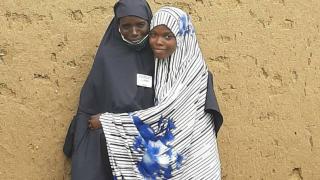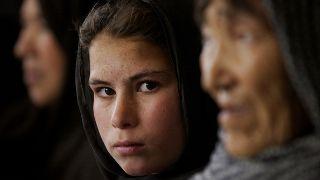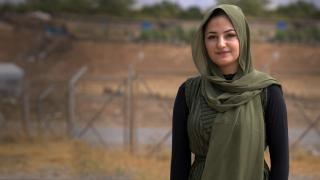Lessons on the Importance of Engaging Men from Netflix’s "Adolescence"
Lessons on the Importance of Engaging Men from Netflix’s "Adolescence"
Responding to Male-Perpetrated Violence through our Men’s Engagement Programme
The new Netflix show Adolescence has captivated audiences across the UK – and for good reason. This powerful collaboration between Stephen Graham and Jack Thorne directly tackles the pressing issue of boys and young men being radicalised through online communities that promote harmful and extreme ideas about masculinity. While social media has given rise to fresh challenges for parents navigating toxic influences, the dangerous attitudes and narratives being spread are far from new.
But what does the show – which is grounded in the UK and focuses on the influence of social media – have to do with our work in conflict-affected countries, where life on the ground looks very different?
Adolescence offers a powerful depiction of how boys grow into men within systems that fail them emotionally, socially and morally. It explores themes of violence, power, vulnerability and belonging, and the show has rightly been praised for its honest portrayal of the pressures boys face and the dangerous paths some follow when left unsupported. These realities cut across contexts, and no matter where or how it happens, the outcome is the same – violence against women.
At Women for Women International, we believe that a world free from violence against women and girls (VAWG) is possible – but only if we confront its root causes with nuance, clarity and courage. A vital part of that work is engaging men through our Men’s Engagement Programme (MEP) – an initiative that educates men to challenge harmful gender norms and become advocates for gender equality. The women we serve requested this themselves. After years of serving women, they told us we needed to go a step further and asked us to educate the men in their communities about women’s rights – because without male allyship, it is impossible to end male-perpetrated violence.
When we speak about VAWG, the numbers alone tell a devastating story. According to the Femicide Census, last year at least 80 women in the UK were killed by men. Rates of domestic violence are even higher, with over 1.6 women and girls in the UK having experienced domestic abuse in 2024. In the conflict-affected countries where we work, these numbers are worse, with rape and other forms of sexual violence often used as a weapon of war.
Behind each statistic is a name, a life, a family shattered – and a warning that this violence often begins in the home. Further, these are not isolated incidents; they are the outcome of a global culture of misogyny, violence and impunity. That is why we believe interventions must begin at the root – transforming the cultural and social norms that allow this violence to be perpetuated.
The Unseen ‘Katie’ from Adolescence: A Symbol of Erased Women
There is a powerful silence running through Adolescence – a silence we’ve come to recognise too often in these conversations: the absence of the women affected by male violence. The victim of the main character’s violence is a young girl named Katie. As the show progresses, we learn very little about her – she is peripheral, a whisper in the storyline. Is this not emblematic of the way that women are so quickly and easily erased from the conversation, even as they are the ones whose lives are irreparably damaged?
In the show, it seems that “Katie” is a stand-in for any woman impacted by the male protagonists’ trauma, violence, or choices. In real life, Katie could be any woman – a mother, sister, partner, friend – whose life is irreversibly changed, or ended, by the actions of a man failed by society.
This is the problem. We can talk about men’s pain, men’s needs, men’s struggles – and we must. But when those conversations leave out the women affected by their violence, we reinforce the very structures we’re trying to dismantle.
Why We Engage Men – and For Whom
This is why our Men’s Engagement Programme (MEP) matters. MEP isn’t just about giving men a space to talk about emotions or redefine masculinity. It’s about challenging the norms that lead to control, domination and violence – and doing so in service of women’s safety, freedom and dignity.
Murhula, an MEP participant from the Democratic Republic of Congo, shares how the programme has impacted his life: “Before, I didn’t know the different forms of violence. Now I know about rape. I respect women. I used to think that certain jobs are just for men. But today I can see that the work a man can do, a woman can also do. Personally, I changed a lot.”
We engage men not to centre them, but to hold them accountable and equip them to become part of the solution. As much as boys and men are shaped and often harmed by patriarchy, it is women and girls who bear the brunt of its violence.
Our work with men is a strategy – not a destination. In communities where men’s engagement activities are delivered, the women we work with have higher class attendance rates and increased value as decision makers within the family. This shows that men are a critical part of the solution, and their allyship cannot be undervalued.
Healing Must Include Justice
Adolescence shows us that young men are crying out for different ways to be, and it is no secret that the patriarchal social norms that harm women are also ultimately harmful to men. Traditional masculinity, for example, encourages risk-taking behaviour and discourages help-seeking behavior, thus posing a significant threat to both physical and mental wellbeing. Men are reporting higher rates of loneliness and isolation than ever before recorded, with 1 out of 3 men in the UK stating that they have zero close friendships in their lives. The implications of this on mental and emotional health are clear.
But the show’s emphasis also unintentionally illustrates a risk: that in telling their stories, we forget the stories of those left behind. Victims like “Katie” in the real world – and those women and girls who survive violence – are more than secondary characters. They are central to the story of violence and must be central in our efforts to end it. Even in efforts to heal men, there must be space for justice, for reckoning, for reparation.
Women as Peacebuilders, Not Footnotes
This truth extends beyond the personal stories or individual cases. In contexts of conflict and healing post-conflict, women’s participation in peacebuilding leads to more durable and inclusive outcomes. According to UN Women, it increases the probability of a peace agreement lasting 15 years by 35%. Yet they are often excluded from the negotiating table.
At Women for Women International, we work with women survivors of war and violence, equipping them with the tools to rebuild their lives. But we also know that no amount of resilience on their part can replace the need for real systemic change.
A Call to Re-Center
The work of ending VAWG requires nuance and compassion. It requires listening to men, but not at the expense of women. It requires understanding trauma, but not excusing harm. It requires space for male healing, but rooted in accountability and centered on justice for women.
As we expand conversations around toxic masculinity and explore how to support boys and men in rejecting violence, we must remember to keep women’s voices front and centre. Women’s lives depend on a gender-equal world that is free of violence, but it is not just the right thing for women – it is the key to a better world for us all.
Read more
Every woman has the power to transform her own life — and the lives of girls around her. On International Day of the Girl Child, we are spotlighting the barriers to equality facing girls in Nigeria and the women working to clear the way.
Since the Taliban’s return to power in Afghanistan in August 2021, Afghan women have experienced profound changes in their daily lives. The de facto government has reinstated many restrictions, severely limiting the rights and freedoms of women and girls.
Yet, in the face of these challenges, Afghan women have shown extraordinary determination and strength, finding ways to resist and adapt. Here, we explore five significant ways their lives have changed, highlighting both the difficulties they face and their ongoing fight for their rights.
Amina
subtitle:
In Afghanistan, Amina* dares to stand up for women’s rights. Women have been virtually erased from public life over the past two years: banned from parks, gyms, restaurants, most jobs and education. Opposing these restrictions is incredibly dangerous, but Amina dares to keep teaching in our training centre. She braves the constant scrutiny of government authorities and she dares to spread the word that education should be the right of every woman and girl.
*Although the story is real, for reasons of security and privacy, we're not using Amina's real name or photograph.



